Data Generation Based on Generative Adversarial Network with Spatial Features
-
摘要: 传统的生成对抗网络(GAN)在特征图较大的情况下,忽略了原始特征的表示和结构信息,并且生成图像的像素之间缺乏远距离相关性,从而导致生成的图像质量较低。为了进一步提高生成图像的质量,该文提出一种基于空间特征的生成对抗网络数据生成方法(SF-GAN)。该方法首先将空间金字塔网络加入生成器和判别器,来更好地捕捉图像的边缘等重要的描述信息;然后将生成器和判别器进行特征加强,来建模像素之间的远距离相关性。使用CelebA,SVHN,CIFAR-10等小规模数据集进行实验,通过定性和盗梦空间得分(IS)、弗雷歇距离(FID)定量评估证明了所提方法相比梯度惩罚生成对抗网络(WGAN-GP)、自注意力生成对抗网络(SAGAN)能使生成的图像具有更高的质量。并且通过实验证明了该方法生成的数据能够进一步提升分类模型的训练效果。Abstract: Traditional Generative Adversarial Network (GAN) ignores the representation and structural information of the original feature when the feature map is large, and there is no remote correlation between the pixels of the generated images, resulting image quality is low. To improve the quality of the generated images further, a method of data generation based on Generative Adversarial Network with Spatial Features (SF-GAN) is proposed. Firstly, the spatial pyramid network is added into the generator and discriminator to capture the important description information better such as the edge of the images. Then the features of the generator and discriminator are strengthened to model the remote correlation between pixels. Experiments are performed with small-scale benchmarks (CelebA, SVHN, and CIFAR-10). Compared with improved training of Wasserstein GANs (WGAN-GP) and Self-Attention Generative Adversarial Networks (SAGAN) by qualitative and quantitative evaluation of Inception Score (IS) and Frechet Inception Distance (FID), the proposed method can generate higher quality images. The experiment proves that the generated images can improve the training effect of the classified model further.
-
表 1 在CelebA数据集上不同模型的对比结果
模型 IS↑ FID↓ WGAN-GP 2.189 55.324 SAGAN 2.238 47.624 SF-GAN 2.468 47.064 表 2 在SVHN数据集上不同模型的IS对比结果
模型 0 1 2 3 4 5 6 7 8 9 WGAN-GP 2.653 2.223 2.484 2.507 2.328 2.507 2.709 2.423 2.810 2.689 SAGAN 2.603 2.291 2.514 2.446 2.460 2.493 2.599 2.559 2.681 2.704 SF-GAN 2.967 2.584 2.893 2.826 2.683 2.803 2.970 2.916 3.063 3.005 表 3 在SVHN数据集上不同模型的FID对比结果
模型 0 1 2 3 4 5 6 7 8 9 WGAN-GP 106.800 101.017 89.446 100.502 96.387 96.058 101.426 124.202 111.576 129.814 SAGAN 113.999 95.865 101.994 98.829 87.574 99.081 109.677 103.439 111.394 108.792 SF-GAN 82.167 74.754 77.222 75.660 75.008 71.066 72.051 82.132 80.748 83.660 表 4 在CIFAR-10数据集上不同模型的IS对比结果
模型 飞机 汽车 鸟 猫 鹿 狗 蛙 马 轮船 卡车 WGAN-GP 3.738 3.156 3.018 2.990 2.491 3.354 2.496 3.426 3.206 2.853 SAGAN 3.756 3.273 3.042 2.971 2.627 3.523 2.506 3.619 3.073 3.099 SF-GAN 4.090 3.803 3.551 3.295 3.038 4.176 2.912 3.820 3.495 3.281 表 5 在CIFAR-10数据集上不同模型的FID对比结果
模型 飞机 汽车 鸟 猫 鹿 狗 蛙 马 轮船 卡车 WGAN-GP 150.220 117.988 138.229 135.831 107.385 125.356 109.235 104.255 101.760 110.521 SAGAN 144.611 164.207 131.030 162.071 102.087 134.925 106.684 112.162 120.274 150.129 SF-GAN 124.756 144.981 107.929 128.807 81.551 106.698 87.428 95.52 92.263 108.855 表 6 不同方法增强后SVHN测试集的分类准确率(%)
模型 0 1 2 3 4 5 6 7 8 9 平均准确率 未增强 58.33 75.00 90.00 80.00 100.00 66.67 92.86 96.88 70.00 96.67 87.65 真实图片增强 100.00 87.50 90.00 90.00 100.00 83.33 100.00 90.62 70.00 96.67 90.51 WGAN-GP
增强91.67 75.00 100.00 90.00 87.50 100.00 96.43 96.88 80.00 93.33 92.39 SAGAN增强 100.00 87.50 100.00 90.00 100.00 100.00 92.86 96.88 90.00 96.67 95.29 SF-GAN增强 100.00 100.00 100.00 100.00 100.00 91.67 100.00 100.00 90.00 100.00 98.31 表 7 不同方法增强后CIFAR-10测试集的分类准确率(%)
模型 飞机 汽车 鸟 猫 鹿 狗 蛙 马 轮船 卡车 平均准确率 未增强 50.00 50.50 50.00 40.00 25.00 33.33 87.50 75.00 83.33 75.00 52.47 真实图片增强 66.67 87.50 60.00 40.00 62.50 50.00 87.50 50.00 83.33 87.50 66.67 WGAN-GP
增强66.67 75.00 80.00 80.00 87.50 91.67 87.50 62.50 83.33 75.00 76.87 SAGAN增强 83.33 100.00 60.00 80.00 62.50 75.00 75.00 87.50 83.33 87.50 78.47 SF-GAN增强 91.67 75.00 70.00 80.00 62.50 91.67 100.00 100.00 91.67 87.50 86.33 -
[1] TAN Mingxing and LE Q V. EfficientNetV2: Smaller models and faster training[C]. The 38th International Conference on Machine Learning, San Diego, USA, 2021: 10096–10106. [2] XIAO Zihao, GAO Xianfeng, FU Chilin, et al. Improving transferability of adversarial patches on face recognition with generative models[C]. 2021 IEEE/CVF Conference on Computer vision and Pattern Recognition, Nashville, USA, 2021: 11840–11849. [3] CHEN Xiangning, XIE Cihang, TAN Mingxing, et al. Robust and accurate object detection via adversarial learning[C]. 2021 IEEE/CVF Computer vision and Pattern Recognition, Nashville, USA, 2021: 16617–16626. [4] CHEN Pinchun, KUNG B H, and CHEN Juncheng. Class-aware robust adversarial training for object detection[C]. 2021 IEEE/CVF Conference on Computer vision and Pattern Recognition, Nashville, USA, 2021: 10415–10424. [5] 张春霞, 姬楠楠, 王冠伟. 受限波尔兹曼机[J]. 工程数学学报, 2015, 32(2): 159–173. doi: 10.3969/j.issn.1005-3085.2015.02.001ZHANG Chunxia, JI Nannan, and WANG Guanwei. Restricted Boltzmann machines[J]. Chinese Journal of Engineering Mathematics, 2015, 32(2): 159–173. doi: 10.3969/j.issn.1005-3085.2015.02.001 [6] LOPES N and RIBEIRO B. Deep belief networks (DBNs)[M]. LOPES N and RIBEIRO B. Machine Learning for Adaptive Many-Core Machines - A Practical Approach. Cham: Springer, 2015: 155–186. [7] KINGMA D P and WELLING M. Auto-encoding variational Bayes[C]. The 2nd International Conference on Learning Representations, Banff, Canada, 2014. [8] GOODFELLOW I J, POUGET-ABADIE J, MIRZA M, et al. Generative adversarial nets[C]. The 27th International Conference on Neural Information Processing Systems, Montreal, Canada, 2014: 2672–2680. [9] LECUN Y, BOTTOU L, BENGIO Y, et al. Gradient-based learning applied to document recognition[J]. Proceedings of the IEEE, 1998, 86(11): 2278–2324. doi: 10.1109/5.726791 [10] RADFORD A, METZ L, and CHINTALA S. Unsupervised representation learning with deep convolutional generative adversarial networks[C]. The 4th International Conference on Learning Representations, San Juan, Puerto Rico, 2016. [11] ARJOVSKY M, CHINTALA S, and BOTTOU L. Wasserstein generative adversarial networks[C]. The 34th International Conference on Machine Learning, Sydney, Australia, 2017: 214–223. [12] BLEI D M, KUCUKELBIR A, and MCAULIFFE J D. Variational inference: A review for statisticians[J]. Journal of the American statistical Association, 2017, 112(518): 859–877. doi: 10.1080/01621459.2017.1285773 [13] WEAVER N. Lipschitz Algebras[M]. Singapore: World Scientific, 1999. [14] GULRAJANI I, AHMED F, ARJOVSKY M, et al. Improved training of wasserstein GANs[C]. The 31st International Conference on Neural Information Processing Systems, Long Beach, USA, 2017: 5769–5779. [15] ZHANG Han, GOODFELLOW I, METAXAS D, et al. Self-attention generative adversarial networks[C]. The 36th International Conference on Machine Learning, Long Beach, USA, 2019. [16] GUO Jingda, MA Xu, SANSOM A, et al. Spanet: Spatial pyramid attention network for enhanced image recognition[C]. 2020 IEEE International Conference on Multimedia and Expo, London, UK, 2020: 1–6. [17] 丁斌, 夏雪, 梁雪峰. 基于深度生成对抗网络的海杂波数据增强方法[J]. 电子与信息学报, 2021, 43(7): 1985–1991. doi: 10.11999/JEIT200447DING Bin, XIA Xue, and LIANG Xuefeng. Sea clutter data augmentation method based on deep generative adversarial network[J]. Journal of Electronics &Information Technology, 2021, 43(7): 1985–1991. doi: 10.11999/JEIT200447 [18] 曹志义, 牛少彰, 张继威. 基于半监督学习生成对抗网络的人脸还原算法研究[J]. 电子与信息学报, 2018, 40(2): 323–330. doi: 10.11999/JEIT170357CAO Zhiyi, NIU Shaozhang, and ZHANG Jiwei. Research on face reduction algorithm based on generative adversarial nets with semi-supervised learning[J]. Journal of Electronics &Information Technology, 2018, 40(2): 323–330. doi: 10.11999/JEIT170357 [19] ZEILER M D, KRISHNAN D, TAYLOR G W, et al. Deconvolutional networks[C]. 2010 IEEE Computer Society Conference on Computer Vision and Pattern Recognition, San Francisco, USA, 2010: 2528–2535. [20] IOFFE S and SZEGEDY C. Batch normalization: Accelerating deep network training by reducing internal covariate shift[C]. The 32nd International Conference on International Conference on Machine Learning, Lille, France, 2015: 448–456. [21] DAHL G E, SAINATH T N, and HINTON G E. Improving deep neural networks for LVCSR using rectified linear units and dropout[C]. 2013 IEEE International Conference on Acoustics, Speech and Signal Processing, Vancouver, Canada, 2013: 8609–8613. [22] XIAO F, HONMA Y, and KONO T. A simple algebraic interface capturing scheme using hyperbolic tangent function[J]. International Journal for Numerical Methods in Fluids, 2005, 48(9): 1023–1040. doi: 10.1002/fld.975 [23] XU Bing, WANG Naiyan, CHEN Tianqi, et al. Empirical evaluation of rectified activations in convolutional network[J]. arXiv preprint arXiv: 1505.00853, 2015. [24] HE Kaiming, ZHANG Xiangyu, REN Shaoqing, et al. Deep residual learning for image recognition[C]. 2016 IEEE Conference on Computer Vision and Pattern Recognition, Las Vegas, USA, 2016: 770–778. [25] LIU Ziwei, LUO Ping, WANG Xiaogang, et al. Large-scale CelebFaces attributes (CelebA) dataset[Z]. Retrieved August, 2018. [26] KRIZHEVSKY A. Learning multiple layers of features from tiny images[D]. [Master dissertation], University of Toronto, 2009. [27] SALIMANS T, GOODFELLOW I, ZAREMBA W, et al. Improved techniques for training GANs[C]. The 30th Conference on Neural Information Processing Systems, Barcelona, Spain, 2016: 2234–2242. [28] DOWSON D C and LANDAU B V. The Fréchet distance between multivariate normal distributions[J]. Journal of Multivariate Analysis, 1982, 12(3): 450–455. doi: 10.1016/0047-259X(82)90077-X [29] KINGMA D P and BA J. Adam: A method for stochastic optimization[C]. The 3rd International Conference on Learning Representations, San Diego, USA, 2015. -





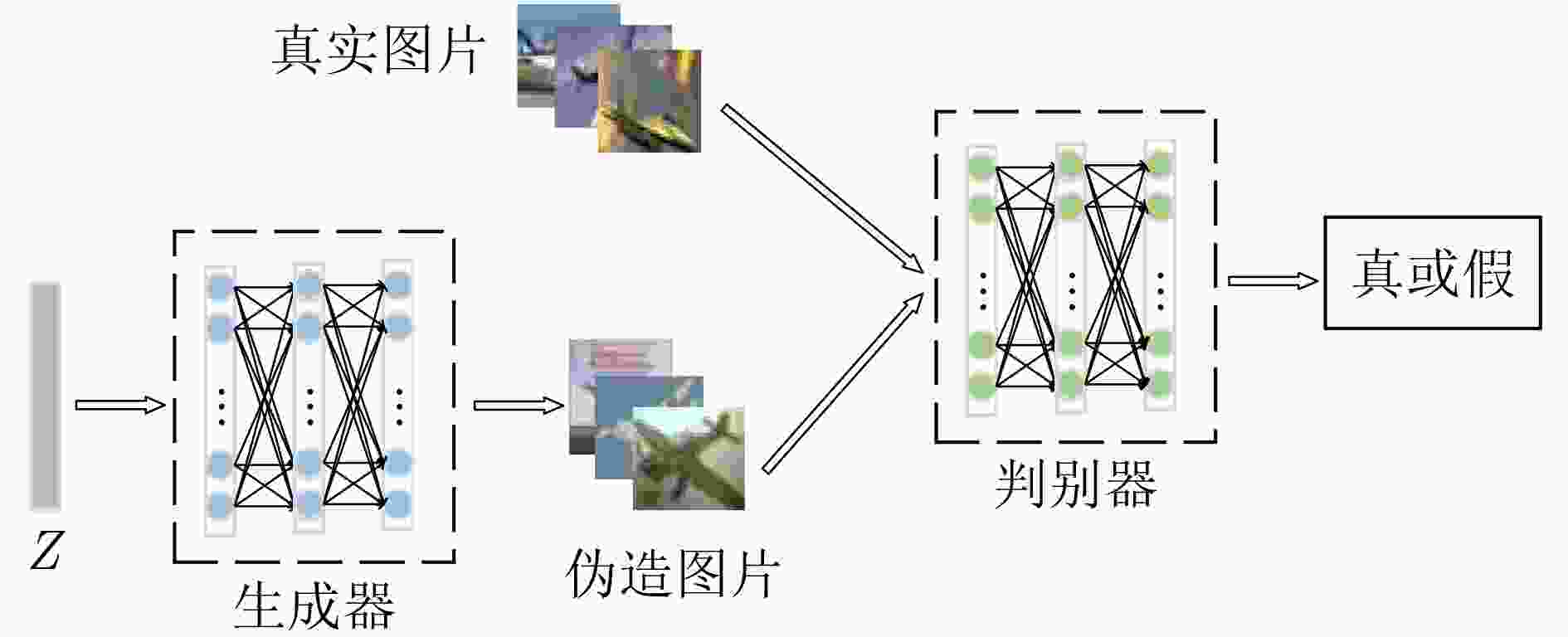
 下载:
下载:
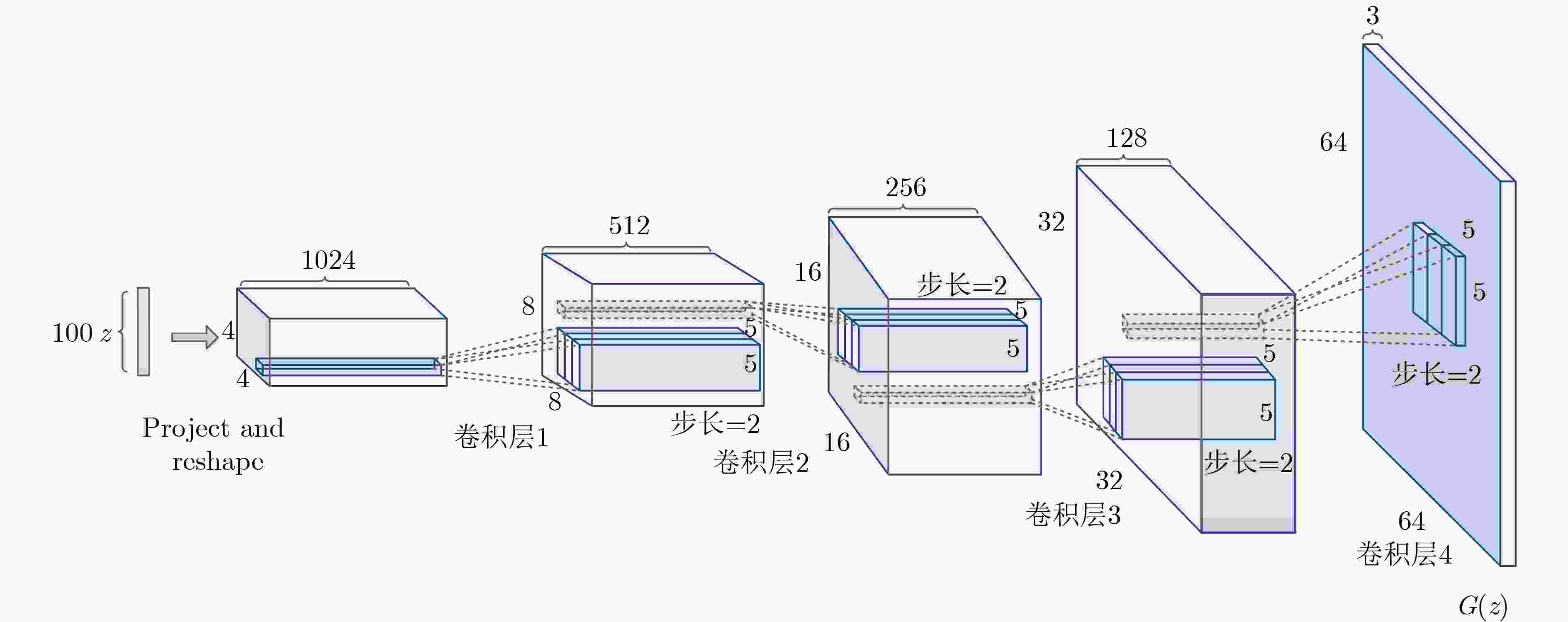

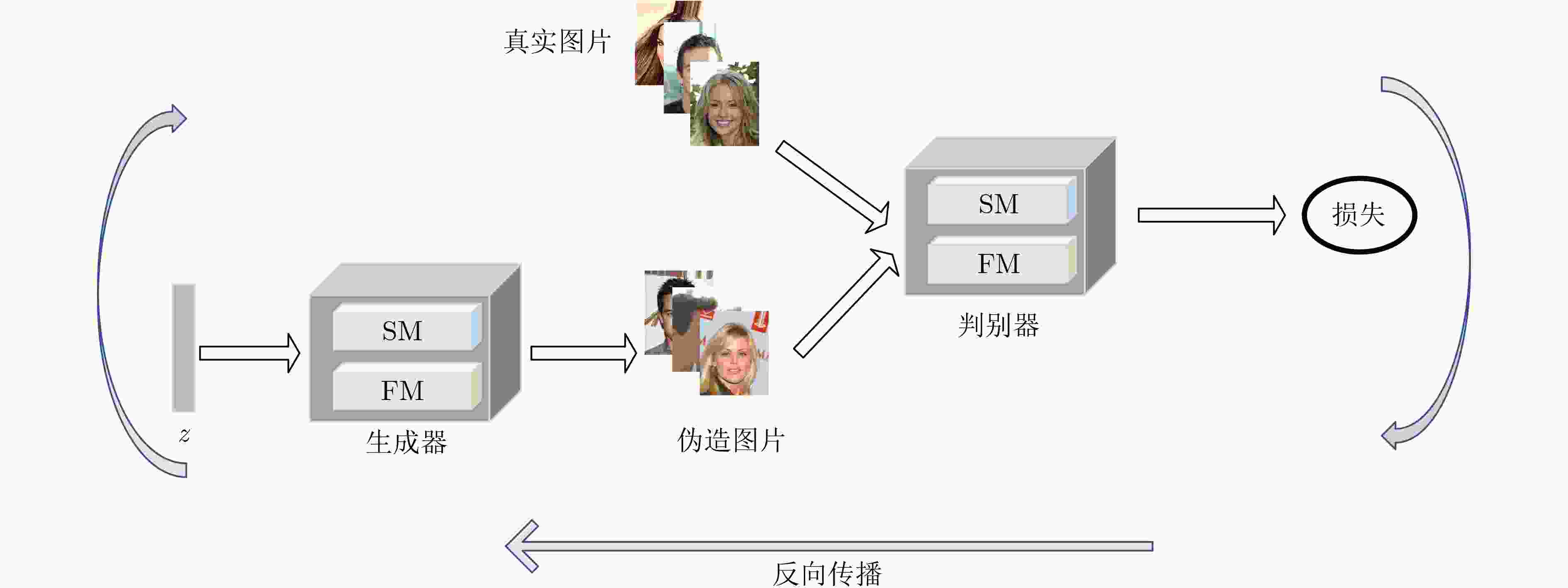





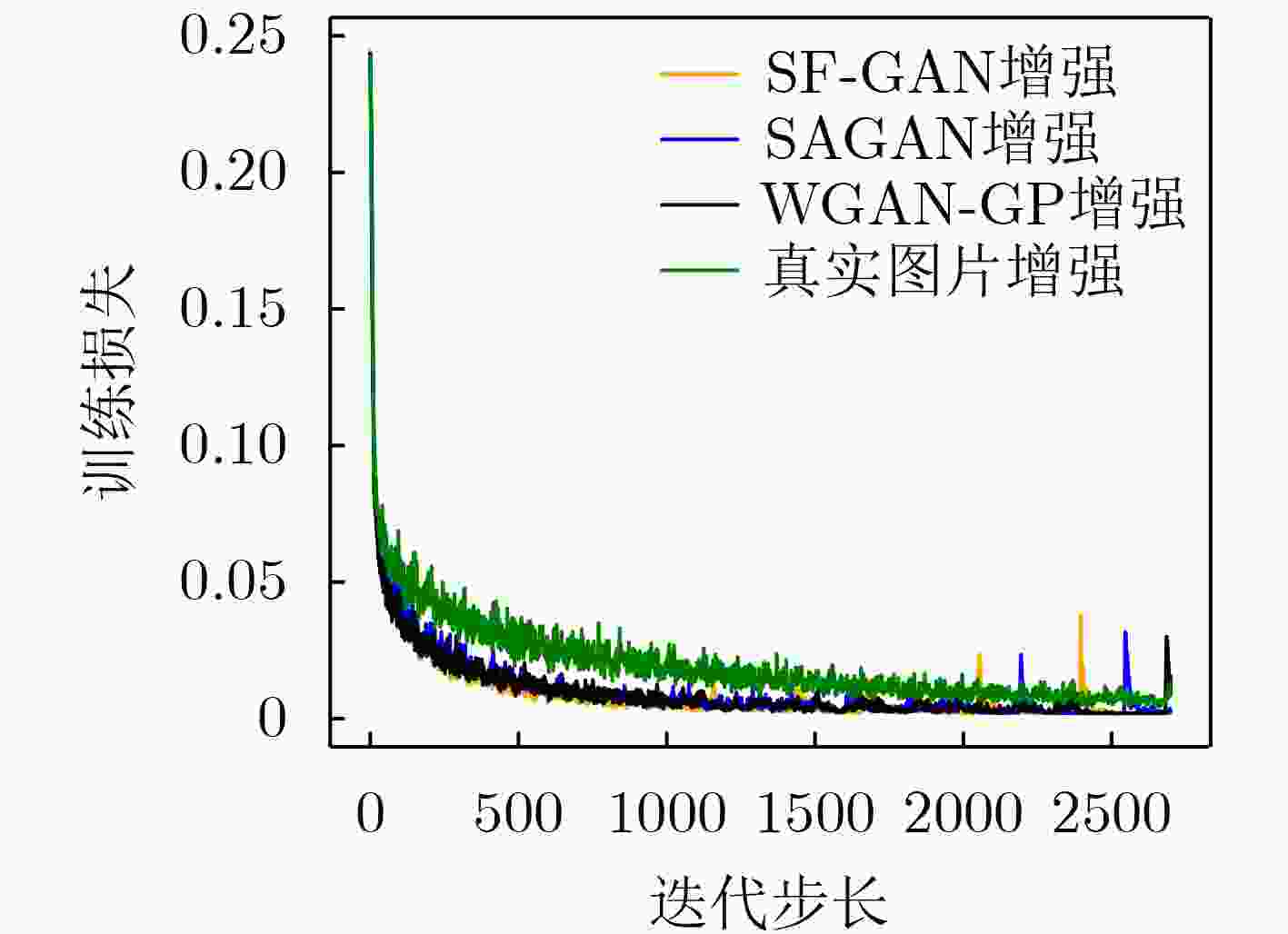

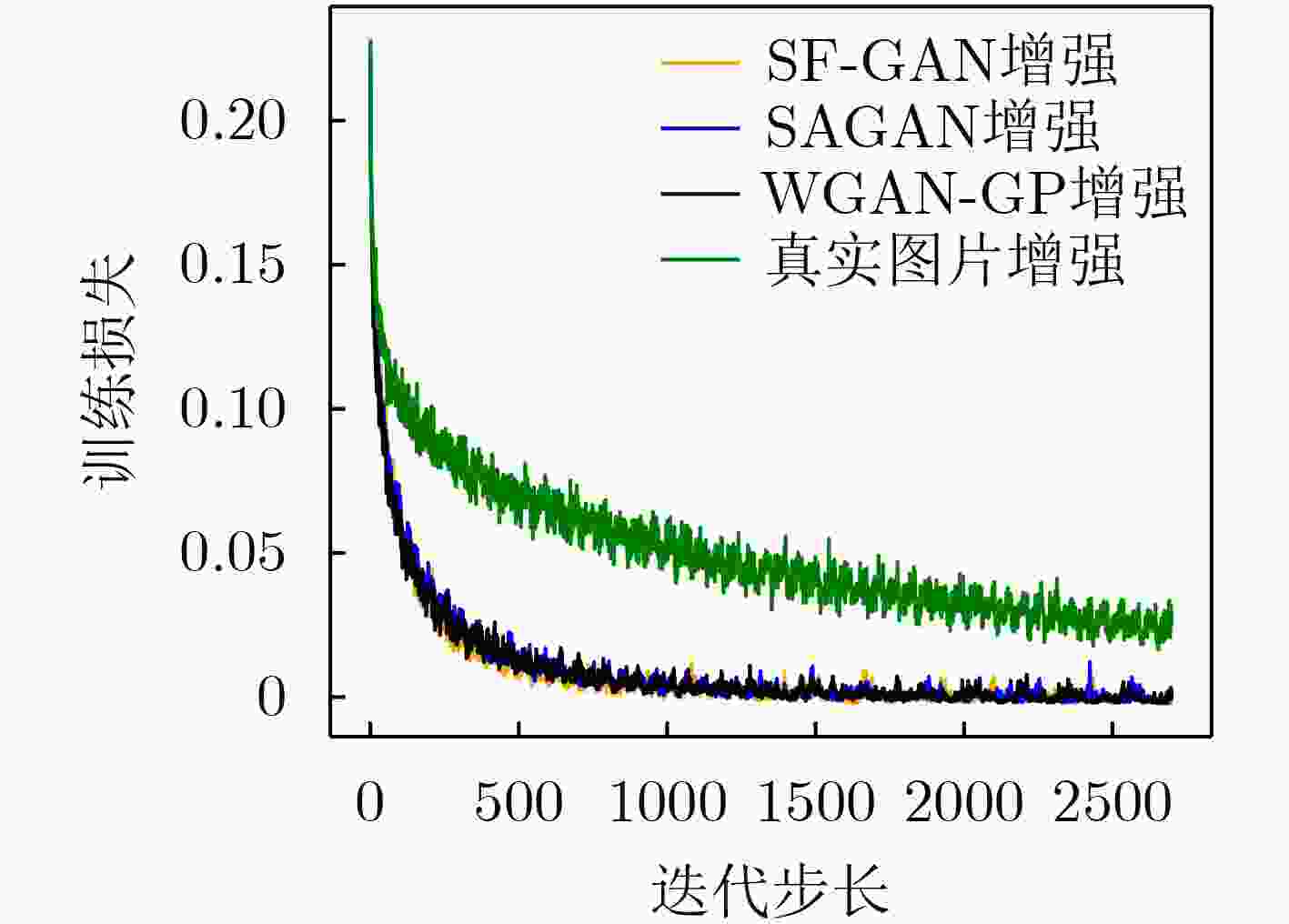
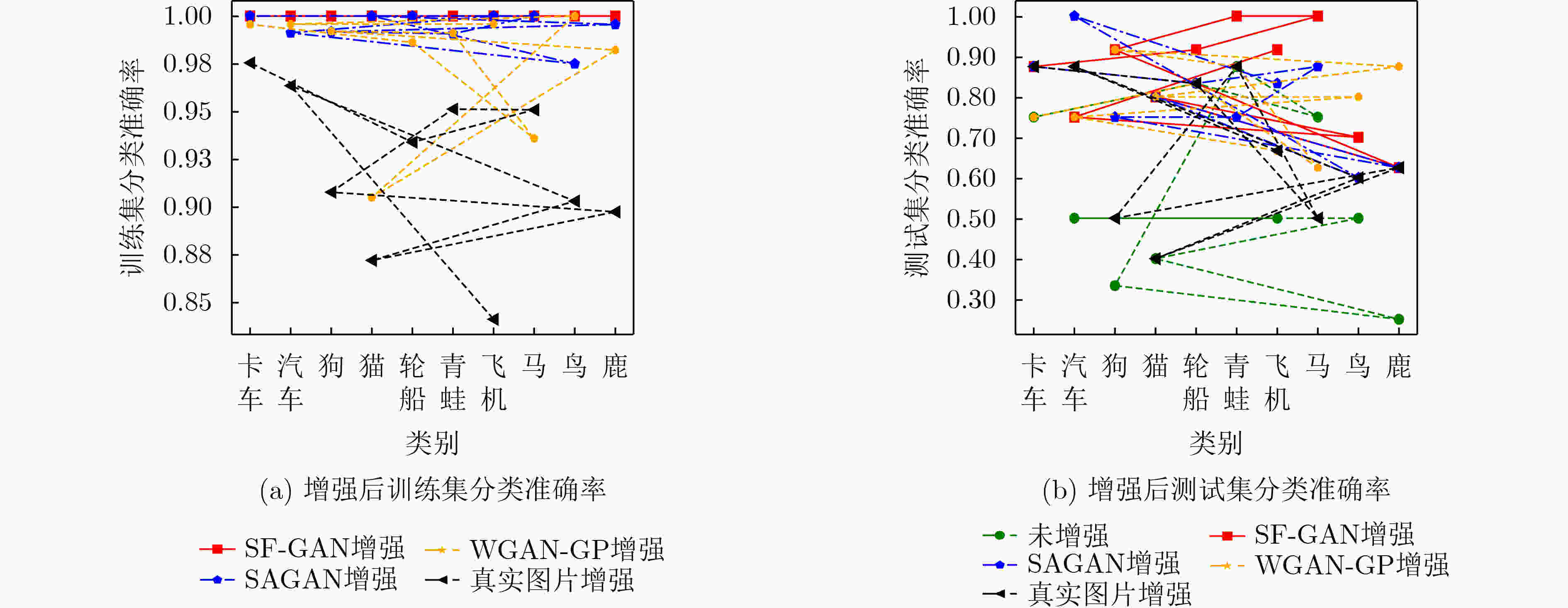


 下载:
下载:
